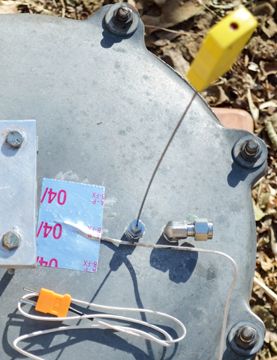Originally posted by fox32
View Post
Most of these type of shielded thermocouples come in metric sizes, but I cannot buy metric compression fittings locally, so I search for the harder to find and more expensive 1/16" (1.6mm) shielded thermocouples. I buy 1/8" National Pipe Thread (tapered fitting) to 1/16" compression adapters, then I drill them out with a 1/16Th drill bit so that the shielded thermocouple can slide through it. There are 1/8" National Pipe Thread (tapered fitting) ports on the lids of the pressure cookers I use for retort and condenser traps.
I am interested in the temperature of the liquid at the bottom of the retort, and each of my condensers, so the I slide the cap and ferrule onto the TC, then slide the TC through the 1/8" National Pipe Thread (tapered fitting) to 1/16" compression adapter down to just an inch (2.5cm) above the bottom of the retort or condenser, then I tighten the nut on the compression fitting.





Leave a comment: